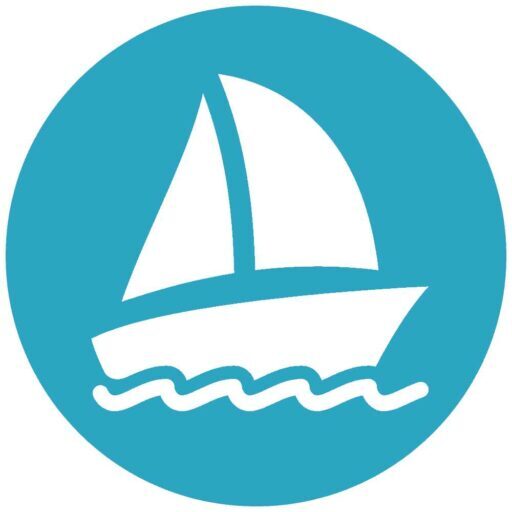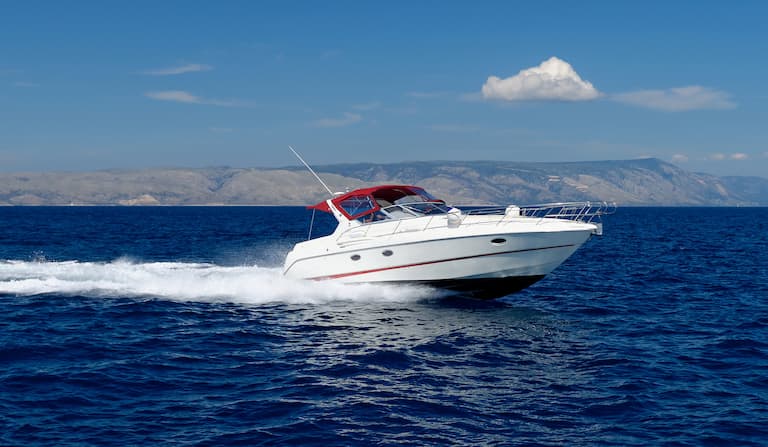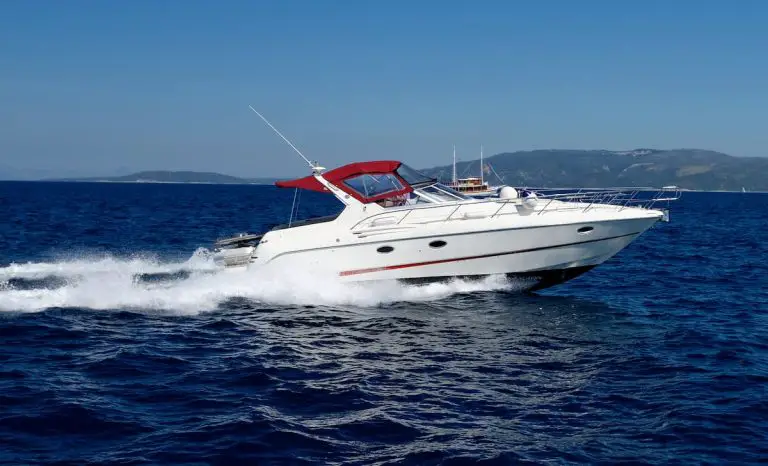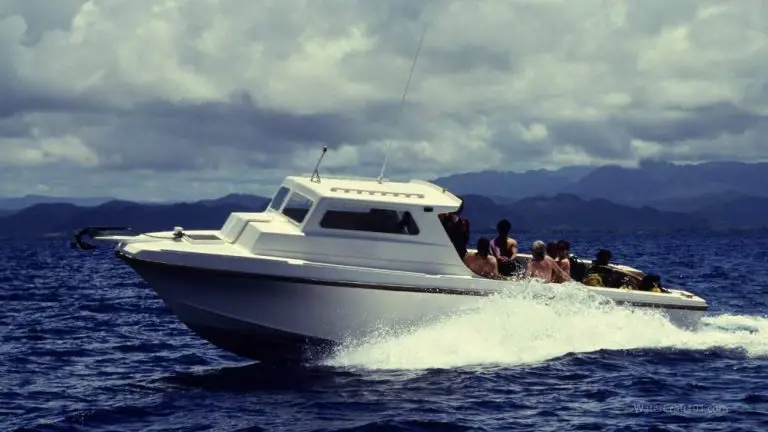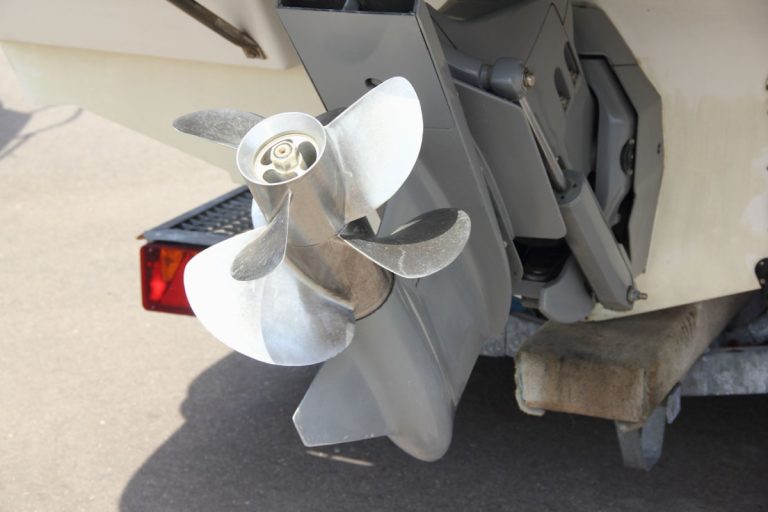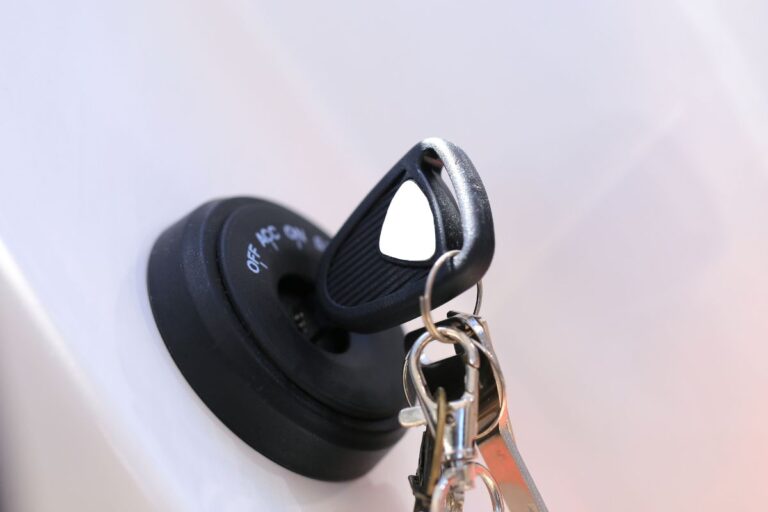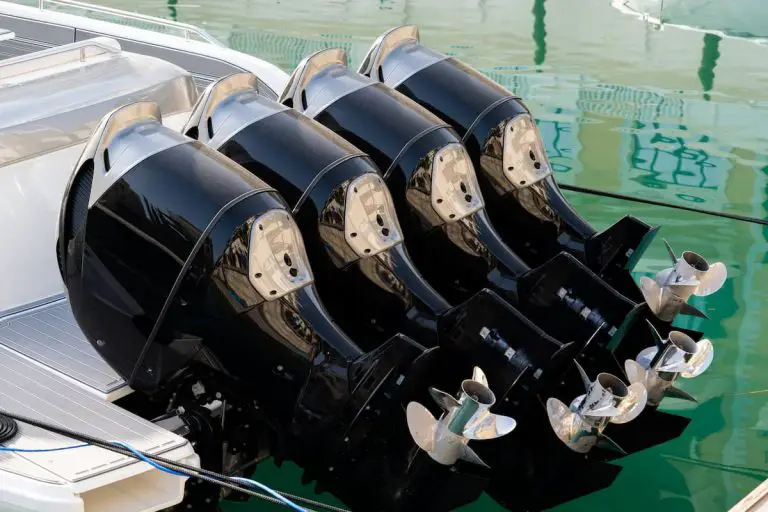9 Common Reasons Why an Outboard Dies at Idle (Explained)
Outboard engines are a convenient and practical way of propelling your beloved boat through the water. However, like all engines, outboard engines are prone to specific issues. One problem that many boat owners come across is the outboard motor stalling while at idle.
Here are 9 common reasons why an outboard dies at idle:
- Carburetor issues
- Idle settings not configured
- Water in the fuel supply
- Clogged fuel tank vent
- Malfunctioning idle air control valve
- Fuel system issues
- Faulty spark plugs
- Fuel injection issues
- Damaged thermostat
Keep reading for an in-depth analysis of the most common causes of problems that make your outboard motor stall. I’ll also explore the symptoms and solutions to various engine issues, so you can get your outboard running smoothly again and keep it in working condition.
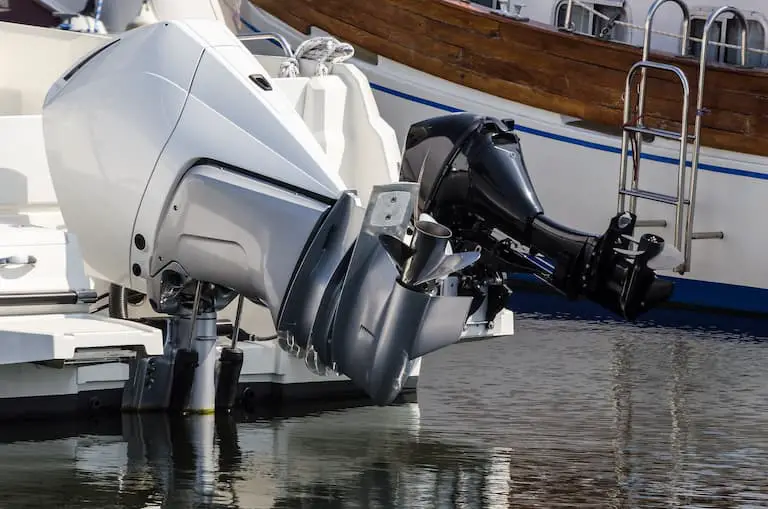
1. Carburetor Issues Cause Boat Motors to Stall in Idle
The most likely cause of your outboard not running when idle is an issue with the carburetor. If the carburetor isn’t working effectively, it’ll cause the engine to die while at idle. As a result, when your outboard stall’s at idle, the carburetor is the first place to start looking for the cause of the issue.
Even the most minor issues with the carburetor in your outboard may cause it to die at idle. For instance, if a screw comes loose in the carburetor, it could trigger issues. Try tightening the screws in your carburetor and then check to see if the engine is still dying at idle.
However, if your outboard is still not running well when idling, the carburetor may be experiencing more severe problems. If you find yourself in this situation, you may need to replace the entire carburetor. However, replacing a carburetor in a shop could cost a few hundred for the parts plus labor expenses.
Luckily, it’s possible to rebuild your carburetor at home as a DIY project. You can purchase the parts needed to rebuild the carburetor in an outboard for about $50. Then if you have the necessary tools and equipment for the job, you can replace the damaged parts with new ones in just a couple of hours.
It’s important to note that attempting carburetor repairs without the required skill and knowledge could result in further damage, which will require expensive repairs. If you’re not comfortable replacing the carburetor by yourself, you should look for a licensed technician who can help.
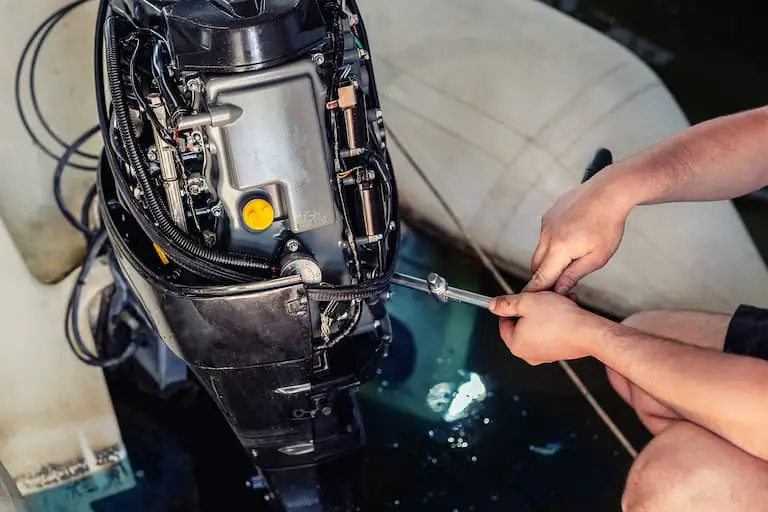
2. Idle Settings Not Configured Properly Will Stall a Boat Engine
Many boat owners don’t realize this, but outboard engines have idle settings. These settings allow the motor to continue running even when the boat is idle. However, when these settings aren’t correctly adjusted, the engine may cut out when inactive.
To determine whether your idle settings are correctly adjusted, you’ll first need to look up the correct settings for your specific outboard make and model. You’ll find the recommended maximum idle speed for a warm engine. Once you’ve figured out the speeds you are looking for, you’ll need to get a screwdriver to make some adjustments.
The idle settings are changed by tightening or loosening the idle adjustment screw. You’ll typically find the idle adjustment screw on top of the carburetor in an outboard engine. Turn the screw clockwise to increase the rpm to suit the recommended levels, and turn in the opposite direction to decrease the RPM.
While the recommended maximum RPM differs for each make and model of the outboard motor, most outboards’ max RPM is about 700-800 RPM. Therefore, if your engine is running outside of this RPM range, you will need to adjust it to restore proper working conditions.
3. Water in the Fuel Supply Can Cause Your Outboard to Die
Another common culprit of outboard motors dying at idle is water getting into the fuel supply. Internal combustion engines (ICE) rely on controlled explosions to work. If your outboard engine takes gas, 2-stroke, diesel, etc., then it’s an ICE engine. And if water gets into the fuel supply, it will hamper the engine’s ability to work.
Since outboard engines and boats spend almost all of the time partially submerged in water, some of the water is bound to make its way to places it’s not supposed to be, like the fuel lines. When water gets into the fuel, it will be pumped through the engine, which can have devastating consequences.
Some of the most common consequences of water in the engine are:
- Water is corrosive to ferric metals like iron and steel.
- Water does not compress like fuel, which may cause mechanical damage to pistons or other engine areas.
- Water in the fuel may wash away lubricant causing your engine to seize.
Any of these problems will result in the need for costly repairs and replacements.
Water can get into the fuel supply through cracks or damage to the engine or gaskets. You can install a water and fuel separator, which will remove water from the fuel supply to protect your boat from this. You can also drain the fuel from your boat engine if you suspect water in the fuel is the issue.
This is a more budget-friendly fix if for some reason you suspect that this is a one-time issue.
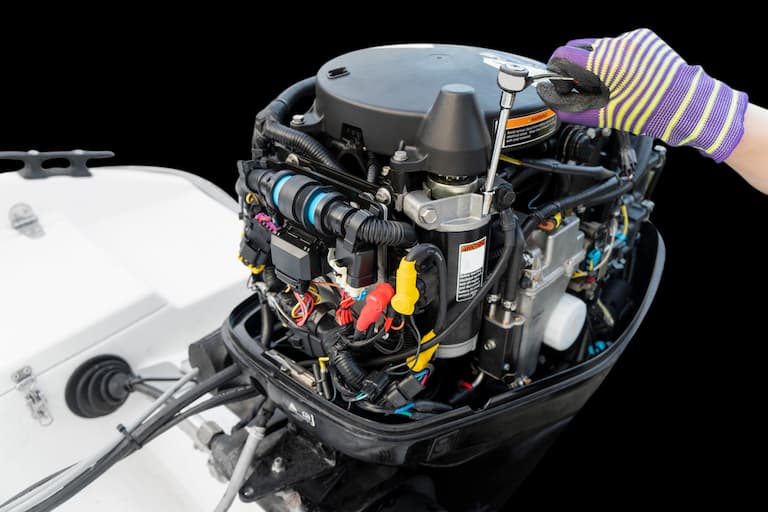
4. Clogged Fuel Tank Vent Will Stall an Outboard at Idle
The next usual suspect in an outboard motor dying at idle is a clogged fuel tank vent. When the vents in your outboard motor are clogged, it will prevent air from getting into the engine. Outboard motors need air inside to facilitate combustion and produce thrust.
Therefore, blocked vents can be a severe problem.
A few signs indicate that your fuel tank vents are clogged in an outboard, besides stalling at idle. You should keep an eye out for the engine not receiving adequate fuel and losing power while moving. If you spot any of the indicators of a blocked vent, you’ll need to find and resolve the issue to restore function to the engine.
Examine the vent ports and the reading screen on the vent. If the vent ports or the reading screen are clogged, you’ll need to remove the build-up. To remove tough build-ups from the reading screen, you’ll likely need a wire brush to break up the dirt and dust.
In the case of damages to the vents, you may need to replace them. You can attempt this yourself as a DIY project. However, in severe cases, you should consult an expert or hire a professional for the job.
While this will be more expensive than a DIY fix, you will eliminate the risk of causing further harm to the outboard.
5. Malfunctioning Idle Air Control Valve Will Stall a Boat Engine
The idle air control valve (IAC) is a valve in your outboard engine designed to control the airflow through the machine. The IAC also maintains the engine’s idle speed. Therefore, a faulty idle air control valve is likely to cause a host of problems to your outboard motor when it’s idle.
If your IAC is malfunctioning, it’ll likely trigger a few things:
- Firstly, the check engine light will probably turn on.
- Your outboard will likely stall often as no air gets into the engine.
- The outboard will also be very rough when idling if the IAC is worn out.
The bad news if you have a faulty IAC is that repairs are typically not cheap. In most shops, you can expect to pay at least $200-$400 to repair or replace your IAC in an outboard. However, you can attempt to repair or replace this piece as a DIY job.
Replacing the IAC isn’t a simple job, but it’s possible to do at home with the right tools. The parts required to return the IAC in your outboard should cost you less than $100, significantly reducing repair costs.
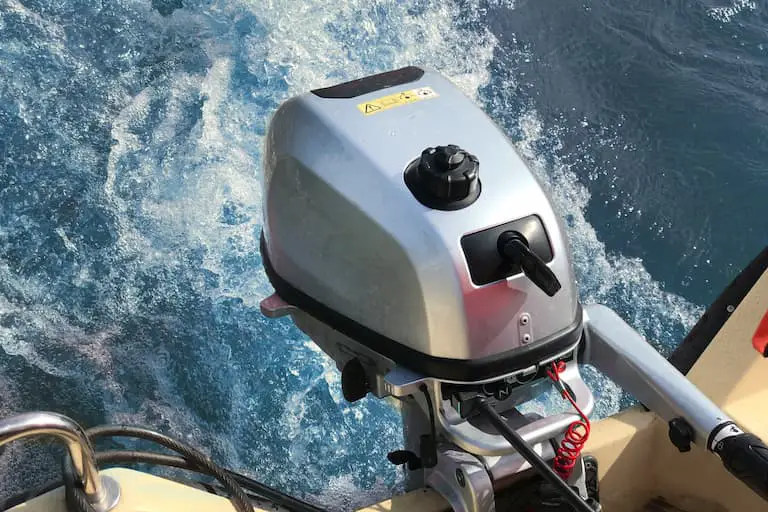
6. An Outboard Can Stall Due to Other Fuel System Issues
The fuel system in your outboard boat is essential. If the fuel system isn’t appropriately maintained or has been damaged, it’ll lead to various issues, including causing the engine to stall when idle. It makes sense to check the fuel system when the engine cuts out while idling.
If your fuel system is damaged, it may allow contaminants to enter the fuel. The fuel lines may have cracks, or this issue could harm the fuel pump. If you spot any indicators of problems with your fuel system, it’s best to seek expert help.
A malfunctioning fuel system will cause mechanical damage to the outboard motor. Therefore, repairing and replacing the damage will prevent further issues. The fuel system may be cleaned out and fixed in the shop for a few hundred dollars.
Paying this repair fee will reduce the costs involved in repairing worse damages down the line.
7. Faulty Spark Plugs Will Stall an Outboard Motor
Another likely cause of your outboard stalling while at idle is faulty or broken spark plugs. Spark plugs spark the fuel inside the engine, triggering small explosions that run the engine. Therefore, spark plugs are essential components in an ICE vehicle, even when idle.
Smart plugs become faulty when the incorrect type of plug is installed for your outboard or when the wrong fuel or engine oil is put into the engine. However, spark plugs can wear out after time due to normal wear.
When the spark plugs go wrong, the outboard will misfire. This may result in high fuel consumption, loss of power, or the engine cutting out while idling. You can check each spark plug in your outboard motor with a spark plug checker. This device will see whether a suitable current flows through the piece.
Alternatively, you can look for visible signs of a faulty spark plug. Spark plugs are supposed to be dry and clean. So check to see if there is excess moisture or dirt on your plugs, as this is a sign of damage. Build-up on your spark plugs may also indicate issues with the fuel.
Faulty spark plugs are affordable and easy to replace. As a result, you should regularly change out any spark plugs that may be causing your engine to misfire or stall at idle.
8. Fuel Injection Issues Cause an Outboard Motor to Die at Idle
If your outboard engine stalls while idle, it might have something to do with an issue with the fuel. I’ve already discussed the problems when water is present in the fuel; however, issues with the fuel injection can cause similar problems.
Fuel injections are used in place of carburetors in some motors to pump fuel into the cylinders in an engine. As a result, faulty fuel injectors may cause the engine to misfire. This will cause issues while the machine is at idle, and it may cause you to lose power while accelerating.
Fuel injectors can become worn over time. Fuel injectors also get blocked up by old oil or contaminants in the fuel supply. When this happens, the fuel injection system can be cleaned in a shop. As a matter of fact, fuel injection systems should be serviced or cleaned at least once a year to remove build-ups of dirt or carbon.
If the fuel injectors don’t start functioning correctly after cleaning, they may require a replacement. Replacing damaged fuel injectors early will reduce the risk of further damage and save you money on replacements.
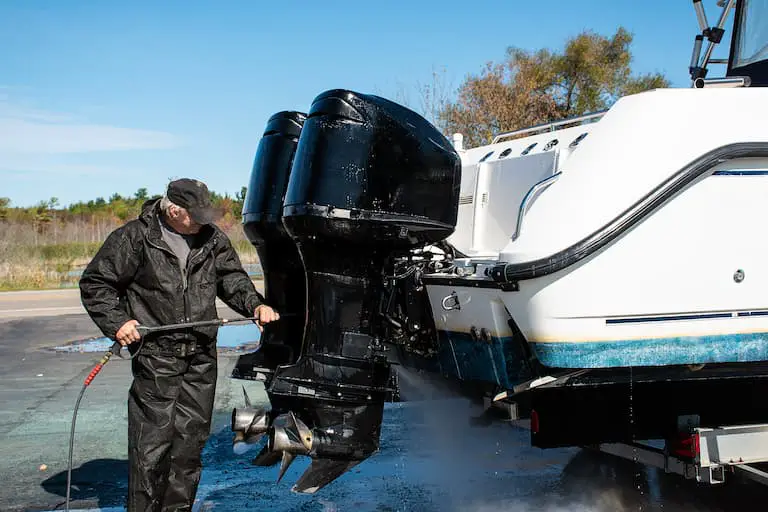
9. Damaged Thermostat Can Stall an Outboard Motor
Despite being the last mention on this list, a damaged thermostat is one of the most likely causes of issues with your outboard if it’s stalling at idle. The thermostat regulates the engine temperature, and if the engine isn’t at the correct temperature, it may cause a variety of problems.
If your outboard is discharging water from the exhaust pipe at idle or performing poorly in colder weather, it’s likely due to a faulty or damaged thermostat in the outboard.
Damaged thermostats can’t be serviced, even by experienced professionals. As a result, you’ll likely need to replace the broken thermostat. Replacing the thermostat will restore the outboard to working condition.
It’s essential to replace your outboard’s thermostat as soon as you notice any issues arise. Since thermostats can’t be repaired and they’re a crucial component in the engine, replacing them at the first sign of an issue prevents further damage. Other damage will likely result in the need for expensive repairs and replacements.
Replacing the thermostat is inexpensive. Therefore, replacing the component as soon as possible will reduce the risk of further damage and could save you a fortune in the long run.
